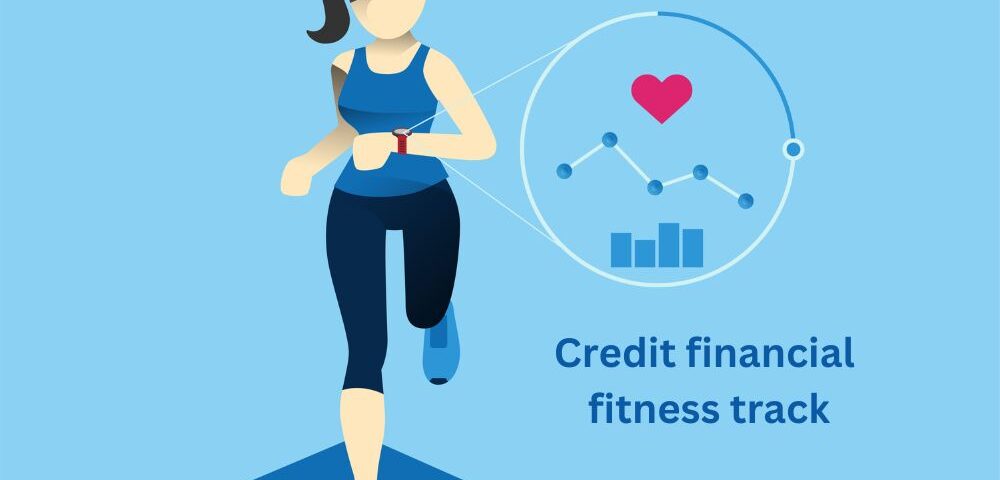- Credit Restoration Experts Nationwide

How to Repair Your Credit After Foreclosure
October 27, 2023
Student Loans and Debt-to-Income: Strategies for Maintaining a Favorable Credit Financial Education Balance
November 8, 2023Maximizing Credit Fitness: Understanding the Limits of Points from Amount Owed

Thus, a good credit score and keeping credit financial fitness track can save you a substantial amount of money over time, while a poor credit score can cost you more in interest and limit your financial flexibility.
Your credit score is much more than just a number; it’s a reflection of your financial responsibility and trustworthiness in the eyes of lenders. A higher credit score opens the doors to numerous financial opportunities, such as lower interest rates on loans and credit cards, higher credit limits, and easier approval for mortgages. On the other hand, a lower credit score can limit your financial options, making it more challenging to borrow money or access favorable terms.
For instance, if you’re looking to buy a home, your credit score can be the difference between obtaining a mortgage with a competitive interest rate or facing higher borrowing costs. Even when renting an apartment, landlords often check credit scores to assess the risk of tenants not paying rent on time.
Credit Score Components and Their Impact
Credit scores are calculated based on several key components, each with its own level of influence on your score. While specific scoring models may vary slightly, the most common components include:
- Payment History: This is one of the most critical factors in your credit score. It reflects whether you’ve paid your bills on time and accounts for a significant portion of your score.
- Amount Owed (Credit Utilization): The subject of this blog post, ‘Amount Owed’ or credit utilization, measures the amount of credit you’re currently using compared to your credit limits.
- Length of Credit History: The length of time you’ve been using credit can impact your score. Longer credit histories are generally seen as more reliable.
- New Credit: Opening multiple new accounts in a short period can negatively affect your score.
- Types of Credit: A diverse mix of credit, such as credit cards, loans, and mortgages, can positively impact your score.
Understanding how each of these components contributes to your credit score is essential for maintaining and improving your financial health.
Understanding the ‘Amount Owed’ Factor
‘Amount Owed’ is a measure of how much debt you currently have in relation to your available credit. It is typically expressed as a percentage, known as your credit utilization ratio. To calculate your credit utilization ratio, you divide your outstanding credit card balances by your total credit card limits.
For example, if you have a credit card with a $1,000 limit and you currently owe $300 on it, your credit utilization ratio would be 30%. The lower this ratio, the better it is for your credit score.
How it Affects Your Overall Credit Score
The ‘Amount Owed’ factor has a substantial impact on your credit score, often accounting for about 30% of your FICO score. Here’s how it affects your overall creditworthiness:
- Credit Utilization Ratio: Lenders use your credit utilization ratio to gauge your ability to manage credit responsibly. A low ratio indicates that you’re not heavily reliant on credit, which can positively influence your credit score.
- Creditworthiness: A low ‘Amount Owed’ suggests to lenders that you are not overextended and are more likely to handle additional credit responsibly. This can make you appear less risky as a borrower.
- Scoring Tiers: The FICO scoring model typically categorizes credit utilization ratios into tiers, such as excellent, good, fair, and poor. Your ‘Amount Owed’ directly impacts which tier your credit score falls into.
- Potential for Improvement: One of the benefits of understanding the ‘Amount Owed’ factor is that it’s an area where you can take control and make significant improvements. By paying down debt and reducing your credit utilization ratio, you can enhance your credit score.
Thus, the ‘Amount Owed’ factor in your credit score is a crucial component that reflects your current debt and credit card utilization.
Credit Utilization: The Key Metric
Credit utilization, in the realm of credit scores and financial health, is a fundamental concept. It refers to the percentage of your available credit that you are currently using. To put it simply, it’s the amount of credit you’ve used compared to the total credit available to you.
The formula to calculate credit utilization is straightforward: divide your credit card balances by your credit card limits. For example, if you have a credit card with a $5,000 limit and you have a balance of $1,000, your credit utilization rate is 20%. This rate is typically expressed as a percentage.
Credit utilization is crucial for several reasons, and it holds significant weight in the calculation of your credit score. Here’s why it matters:
- Influence on Credit Score: Credit utilization is one of the most impactful factors in determining your credit score. In fact, it often accounts for about 30% of your FICO credit score, which is one of the most widely used credit scoring models. A lower credit utilization ratio generally indicates responsible credit management and can positively impact your score.
- Indicator of Financial Responsibility: Lenders and creditors use your credit utilization rate as an indicator of your financial responsibility. A high credit utilization rate may suggest that you are heavily reliant on credit and potentially facing financial difficulties, while a low rate implies prudent credit management.
- Creditworthiness: Your credit utilization rate can directly affect your ability to secure new credit or loans. Lenders consider your credit utilization when determining whether to extend credit to you and what interest rates to offer. A high credit utilization rate may lead to higher interest rates or denial of credit applications.
- Scalability of Credit: Responsible credit utilization also impacts your ability to increase your credit limits. Many individuals aim to have higher credit limits, as it can help improve their credit score by reducing their utilization rate. Lenders may be more willing to increase your credit limit if they see you are using your current credit responsibly.
- Balancing Act: Maintaining a good credit utilization ratio requires a careful balance. Ideally, it’s recommended to keep your credit utilization below 30%. However, lower is generally better, with many experts suggesting a target utilization rate of around 10% for optimal credit health.
By keeping this key metric in check, you can demonstrate your financial responsibility to creditors and open doors to better credit opportunities.
The Impact of High Credit Utilization
High credit utilization can have a detrimental impact on your credit score and overall financial health. Here are the key consequences and how it negatively affects your credit score:
Consequences of High Credit Utilization:
- Lower Credit Score: High utilization results in a significantly lower credit score, making you appear riskier to lenders and creditors.
- Risk Assessment: Lenders may see you as a high-risk borrower, leading to unfavorable terms, higher interest rates, or credit application denials.
- Reduced Borrowing Capacity: High utilization limits your ability to take on new credit, potentially hindering financial flexibility.
- Delayed Financial Goals: It can delay your ability to achieve financial goals such as securing a mortgage or obtaining loans with attractive terms.
How High Credit Utilization Negatively Affects Your Credit Score:
- Payment History: High utilization can lead to late or missed payments, damaging your payment history.
- Credit Mix: It can skew your credit mix toward unsecured debt, potentially impacting your score negatively.
- Long-Term Damage: Negative effects, like late payments and high balances, can linger on your credit report, affecting your creditworthiness even after you’ve paid down your debt.
Thus, high credit utilization harms your credit score and financial flexibility. Responsible credit management is essential to mitigate these consequences, including paying down balances and using credit wisely.
Strategies to Optimize ‘Amount Owed’
Your credit utilization ratio, which is the percentage of your available credit that you’re currently using, plays a pivotal role in your credit score. As a result, it’s essential to employ strategies that help optimize the ‘Amount Owed’ component of your credit profile. Here are two effective approaches:
- Paying Down Credit Card Balances
One of the most direct ways to improve your ‘Amount Owed’ factor is to pay down your credit card balances. When you carry high balances on your credit cards, it can negatively impact your credit utilization ratio, which, in turn, lowers your credit score. Here’s how you can effectively tackle this:
- Prioritize High-Interest Cards: If you have multiple credit cards, focus on paying down the ones with the highest interest rates first. This not only reduces your overall debt faster but also saves you money in the long run.
- Create a Repayment Plan: Develop a repayment plan that outlines how much you can comfortably pay each month. Stick to this plan to ensure consistent progress in reducing your balances.
- Avoid Minimum Payments: Paying only the minimum required amount each month won’t significantly reduce your balances. Strive to pay more than the minimum to make noticeable headway.
- Budget Wisely: Adjust your budget to allocate more funds toward debt repayment. This may involve cutting back on non-essential expenses temporarily.
- Use Windfalls and Bonuses: Consider using any unexpected windfalls, such as tax refunds or work bonuses, to make substantial payments towards your credit card debt.
- Increasing Credit Limits
Another strategy to optimize the ‘Amount Owed’ component is to increase your credit limits. A higher credit limit can positively impact your credit utilization ratio, as it expands the amount of available credit at your disposal. Here’s how to go about it:
- Contact Your Credit Card Issuers: Reach out to your credit card issuers and inquire about the possibility of increasing your credit limits. They may grant a higher limit if you have a good payment history and creditworthiness.
- Avoid Overextending: While a credit limit increase can be beneficial, it should not be seen as an opportunity to accumulate more debt. Use the additional credit wisely and responsibly.
- Monitor Your Credit Report: Regularly check your credit report to ensure that any approved increases in your credit limits are accurately reflected. An error on your credit report could negatively impact your score.
- Maintain a Low Balance: Even with increased credit limits, aim to maintain a low balance relative to your available credit. This demonstrates responsible credit management.
By effectively implementing these strategies, you can optimize the ‘Amount Owed’ component of your credit score, leading to a healthier credit profile and better overall credit fitness. This will further lead to better personal and business credit building. Managing your credit responsibly not only improves your credit score but also sets you on the path to financial stability.

